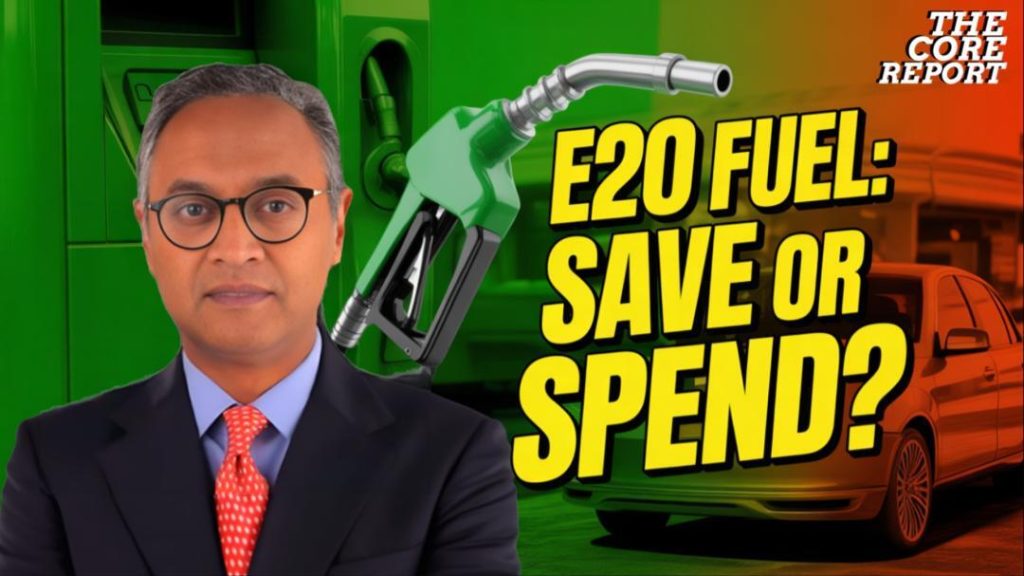
E20 Fuel in India: Benefits, Risks & What Vehicle Owners Must Know
India’s ambitious plan to reduce carbon emissions, boost energy security, and support farmers has led to the introduction of E20, a 20% ethanol-blended petrol. As the government rolls out this new fuel blend, it’s essential for vehicle owners to understand the benefits and risks involved. In this blog post, we’ll delve into the advantages and disadvantages of E20 fuel, as well as what you can expect as a vehicle owner.
Benefits of E20 Fuel
The primary objective of introducing E20 fuel is to reduce India’s dependence on imported fossil fuels, thereby enhancing energy security. By blending gasoline with ethanol, a renewable and domestically produced fuel, the country can reduce its reliance on foreign oil. This, in turn, will help to reduce the country’s trade deficit and support the economy.
E20 fuel also offers environmental benefits. Ethanol, being a biofuel, produces significantly lower greenhouse gas emissions compared to traditional fossil fuels. As per government studies, the use of E20 fuel can reduce carbon emissions by up to 20%. This is a significant step towards meeting India’s climate change mitigation goals.
Another advantage of E20 fuel is its potential to boost the rural economy. The production of ethanol requires sugarcane, which is widely cultivated in rural areas. By promoting the use of ethanol, the government aims to support farmers and create new job opportunities in the agriculture sector.
Risks and Concerns
While E20 fuel offers several benefits, there are also some risks and concerns that vehicle owners must be aware of. One of the primary concerns is the potential impact on older vehicles that are not designed to run on E20 fuel. These vehicles may not be compatible with the new fuel blend, which could lead to engine wear, fuel system corrosion, and mileage loss.
Older vehicles may require modifications to their fuel systems to run on E20 fuel, which could be a costly and time-consuming process. In some cases, it may be more cost-effective to replace the vehicle rather than upgrading its fuel system.
Another concern is the availability of E20 fuel. While the government has set a target of increasing the availability of E20 fuel to 20% of the total fuel sold in the country by 2025, there are concerns about the infrastructure and supply chain required to support this ambitious target.
What Vehicle Owners Must Know
As E20 fuel becomes more widely available, vehicle owners must take steps to ensure their vehicles are compatible with the new fuel blend. Here are some key things you should know:
- Check Your Vehicle’s Compatibility: Before switching to E20 fuel, check your vehicle’s owner’s manual or manufacturer’s website to ensure it is compatible with the new fuel blend.
- Get Your Vehicle Serviced: If your vehicle is not designed to run on E20 fuel, you may need to get it serviced to upgrade its fuel system. Consult with a mechanic or your vehicle’s manufacturer to determine the best course of action.
- Monitor Your Vehicle’s Performance: Keep an eye on your vehicle’s performance after switching to E20 fuel. If you notice any issues, such as decreased mileage or engine problems, consult with a mechanic or your vehicle’s manufacturer.
- Plan Ahead: As E20 fuel becomes more widely available, plan ahead and fill up your tank regularly to avoid running low on fuel.
Conclusion
The introduction of E20 fuel in India is a significant step towards reducing carbon emissions, boosting energy security, and supporting farmers. While there are some risks and concerns, vehicle owners can take steps to ensure their vehicles are compatible with the new fuel blend. By understanding the benefits and risks of E20 fuel, we can all play a role in reducing our impact on the environment and supporting a more sustainable future.
News Source:






